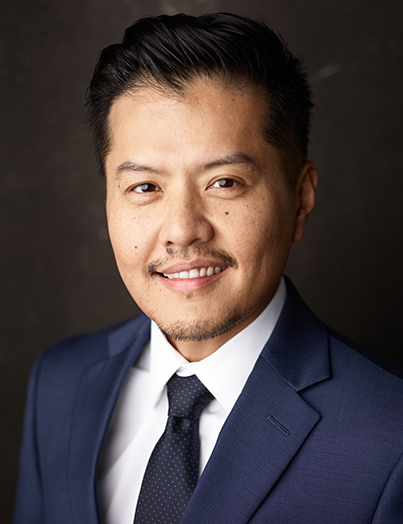Families First Coronavirus Response Act: Critical Questions and Answers Regarding Emergency Leave

I. BACKGROUND
On March 18, 2020, the Families First Coronavirus Response Act (FFCRA) was signed into law.
o What is the effective Date of FFCRA?
– Effective date is April 1, 2020.
– FFCRA is not retroactive.
o What does FFCRA include?
– FFCRA is a relief package that provides emergency leave to employees under:
1. Emergency Paid Sick Leave Act (EPSLA)
2. Emergency Family and Medical Leave Expansion Act (EFMLEA)
o Which employers are subject to FFCRA i.e. subject to the provisions set forth in both EPSLA and EFMLEA?
– Employers with fewer than 500 employees, i.e. 499 employees or less.
– Number of employees is inclusive of full time, part time, temporary employees, and day laborers supplied by a temporary agency.
II. Emergency Paid Sick Leave Act (EPSLA)
A. What circumstances trigger EPSLA?
1) When the employee is subject to a federal, state, or local quarantine or isolation order;
2) When the employee has been advised by a health care provider to self-quarantine;
3) When the employee is experiencing symptoms of COVID-19 and is seeking a medical diagnosis;
4) When the employee is caring for an individual subject (or advised) to quarantine or isolation;
5) When the employee is caring for a son or daughter whose school or place of care is closed, or childcare provider is unavailable, due to COVID-19 precautions; or
6) When the employee is experiencing substantially similar conditions as specified by the Secretary of Health and Human Services.
B. Is California’s “shelter-in place” order the same as a “federal, state, or local quarantine or isolation order?
– CA’s “shelter-in place” order is not the same as a quarantine or isolation order. My understanding is that emergency paid sick leave would only be triggered if the employee has symptoms and ordered to quarantine/isolate.
C. Are there excluded employers from EPSLA?
– Yes; private employers with fewer than 50 employees may seek exemption from the Secretary of Labor for good cause when the requirements under EPSLA would jeopardize the viability of the business when employees are eligible for EPSLA because the employee is caring for a son or daughter of such employee if the school or place of care of the son or daughter has been closed, or the child care provider of such son or daughter is unavailable, due to COVID–19 precautions (CCFRA Sect. 5102(a)(5)).
D. Would employers with less than 50 employees have to pay emergency paid sick leave for the other 5 circumstances that trigger EPSLA?
– While this is not clearly addressed in the EPSLA, my understanding is that emergency paid sick leave would only be triggered if the employee has symptoms and ordered to quarantine/isolate. Therefore, if the employee does not have symptoms and are not ordered to quarantine/isolation, EPSLA does not apply.
E. How much emergency paid sick leave is available to employees under EPSLA?
– For full time employees, employers must provide up to 80 hours of emergency paid sick leave, over a 2-week period.
– For part time employees, employees are entitled to 2 weeks of pay based on the number of hours the employee works, on average, over a 2-week period.
– FT and PT employees are eligible for this paid leave, regardless of how long they have been employed.
F. How much pay will the employee receive?
– For circumstances listed above from A.1) through A.3), the employee is entitled to a maximum of $511/day or $5,110 total over the entire paid sick leave period.
– For circumstances listed above from A.4) through A.6), the employee is entitled to a maximum of $200/day or $2,000 over the entire 2-week period.
G. Can the employer deny the employee paid sick leave if paid sick leave identified in EPSLA was granted prior to FFCRA going into effect?
– No. EPSLA imposes new leave requirement on employers on the effective date.
H. If employer offers Vacation/PTO or other forms of paid leave benefit, can the employer require the employee to use their paid leave benefit first?
– No. An employee is entitled to paid sick leave under EPSLA without first exhausting any paid leave benefit offered by the employer, and the paid sick leave entitlement does not diminish an employee’s sick leave bank.
I. What if the employee is furloughed or laid off by the employer?
– FFCRA is unclear as to whether the employee would still be eligible for EPSLA if the employee is furloughed or laid off prior to FFCRA’s effective date.
– Other employment protection laws would apply to best ensure that the employer did not furlough or lay off the employee for unlawful reasons.
J. Are there excluded employees from EPSLA?
– Yes; employers may exclude health care providers and emergency responders from emergency paid sick leave.
K. Is employer required to pay out emergency paid sick leave?
– No. Employers are not required to pay out emergency sick leave granted under EPSLA at the end of the year or upon the employee’s separation from employment.
III. Emergency Family and Medical Leave Expansion Act (EFMLEA)
A. When is EFMLEA effective?
– EFMLEA applies to leave taken between April 1, 2020 and December 31, 2020.
B. Which employees are eligible under EFMLEA?
– Employees who have been employed for at least 30 days prior to taking leave.
C. What are employees entitled to under EFMLEA?
– Up to 12 weeks of job-protected leave if the employee is unable to work or telework because (1) the employee is needed to care for the employee’s son or daughter (who is under the age of 18) or (2) the child’s school or childcare facility has been closed or the child’s childcare provider is unavailable due to the public health emergency.
D. Is EFMLEA available to grandparents or other kin to take leave to care for a child whose school or childcare is closed or unavailable?
– No; the EFMLEA explicitly provides that leave is available for a school closure or loss of childcare only for an employee’s son or daughter. The EFMLEA does not extend benefits to any other family members or next of kin.
E. How much pay is offered under EFMLEA?
– The first 10 days may be unpaid but employees may choose to substitute any available paid leave benefits such as accrued vacation or PTO or medical or sick leave the employee offers OR employee may use EPSLA (see above) during these initial 10 days.
o Paid leave under EPSLA runs concurrently with leave provided by EFMLEA;
o Employer cannot require substitution of paid leave
– After the first 10 days, i.e. for the last 10-weeks of EFMLEA leave, pay is no less than 2/3 of the employee’s regular rate of pay for hours the employee would be normally scheduled to work (this includes normally scheduled overtime hours), but no more than $200 per day or $10,000 for the total leave period
o Or, if using EPSLA for the first 2 weeks, a total of $12,000 for the total leave period ($2,000 cap from EPSLA during the first 2-weeks/10 days + $10,000 cap from EFMLEA during the remainder 10-weeks).
F. Will benefits continue during the EFMLEA leave period?
– Yes.
G. Is employee’s job protected during EFMLEA leave period?
– Yes; an employee taking leave under EFMLEA must be returned to the employee’s position following leave.
H. What if the employee is furloughed or laid off by the employer?
– FFCRA is unclear as to whether the employee would still be eligible for EFMLEA if the employee is furloughed or laid off prior to FFCRA’s effective date.
– Other employment protection laws would apply to best ensure that the employer did not furlough or lay off the employee for unlawful reasons.
I. What if an employee already used 3 weeks of medical leave under FMLA for a serious health condition, is that employee entitled to another 12-weeks of leave under EFMLEA?
– No. EFMLEA adds new eligibility criteria to the traditional FMLA. Therefore, EFMLEA leave benefit counts towards an employee’s total of 12-weeks of traditional FMLA leave. If that employee uses the EFMLEA benefit, the employee does not have access to leave under the traditional FMLA.
o Employees are entitled to traditional FMLA leave if the employee works for an employer who employs 50 or more employees, and the employee worked for the employer for at least 12 months; have at least 1,250 hours of service over the previous 12 months; and worked at a location where the employer has 50 or more employees within 75 miles.
L. Are there excluded employees from EFMLEA?
– Yes; employers may exclude health care providers and emergency responders from leave under EFMLEA.
M. Are there excluded employers from EFMLEA?
– Yes; private employers with fewer than 50 employees may seek exemption from the Secretary of Labor for good cause when the requirements under EFMLEA would jeopardize the viability of the business.
Disclaimer: Nothing in this document should be construed as legal advice. This is for information only. These answers are based on analyzing the current text of the FFCRA, reviewing the DOL guidelines, and reading other articles, blogs, reviews, and summaries of the FFCRA.
(c) 2020, TONG LAW



